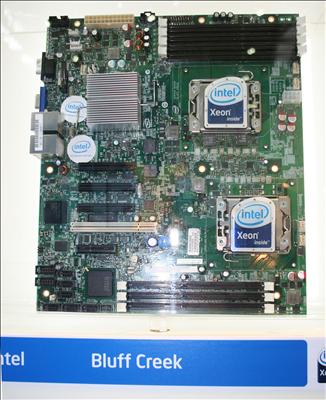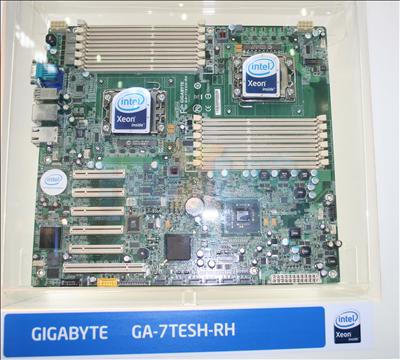Intel parades Xeon Nehalem boards at COMPUTEX
|
by Tarinder Sandhu
on 5 June 2008, 17:06
Tags:
Intel (NASDAQ:INTC)
Quick Link: HEXUS.net/qankw
Add to My Vault:
|
|
The CPU giant has been engaging in a carefully-orchestrated release of technical tidbits, to keep the interest levels high, and, as such, was showcasing a number of Nehalem-supporting boards at its own stand at COMPUTEX 2008.
Intel's very own effort, Bluff Creek, utilises the Xeon Nehalem's flexible-channel memory-controller by having a total of seven DIMM slots.
Of the many others on display, the Gigabyte GA-7TESH-RH looked good, packing in a 2P solution with 12 DIMM slots and decent board layout.
It's strange to see Intel publicly showing motherboards supporting a processor that's still many months off, but there you go.
Incidentally, the same stand was chock-full of X58 chipset-based boards, too, and they support the desktop version of the Nehalem architecture.
Talk about letting the cat prematurely out of the bag, eh?








